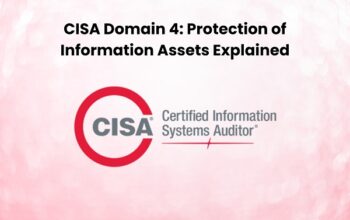Rebates were “invented” in order to boost sales without merely lowering the contract price. By accepting these retroactive cash incentives based on real sales, the distributor and the supplier are working together to expand market share. Rebates are typically used as a reward for loyalty or as an incentive to promote trade with a certain trading partner because the benefits of a rebate agreement tend to grow as commerce with the trading partner increases. Rebates must be reported as income since they have the ability to significantly impact an organization’s bottom line. Normal uncollected rebate revenue amounts to 4% of the total. This might cause numerous groups to lose out on tens of thousands of cash each year. While many core business systems can monitor trade agreements involving vendor rebates, they typically lack the flexibility and wide variety of features necessary to handle the rapidly evolving field of rebate administration. Rebate management software has its own importance in business field specially.
How do you manage rebates?
The practice of registering rebate agreements, monitoring purchases and sales in relation to those agreements, and promptly handling accruals and rebate claims is known as rebate management. With the capacity to estimate benefits, model bids, calculate net margins, and direct trade activity to maximize returns, a dedicated rebate management system, however, may make it much more. Regardless of the size of their rebate programs, every firm may struggle with accurate refund management. Businesses frequently dedicate entire teams to carrying out broken operations using old technologies, which lowers output and negates the benefits of the rebate agreements that commercial teams have spent time and energy creating. Any business that manages rebates must frequently evaluate its workflow and identify potential areas for development. The majority of a small- to medium-sized company’s earnings may come from rebates, and for large companies, even a modest change in technique might lead to the discovery of millions of dollars. It all starts with a dedicated refund management system. Many companies find out the hard way that managing rebates in spreadsheet programs like Excel or by relying solely on data from trading partners is a dangerous slope. This quickly progresses to employing ERP systems or even systems developed domestically, but these systems were not developed by rebate experts and frequently struggle to deal with even the most basic of complications. Additionally, internal and ERP systems usually serve little purpose beyond being expensive, complex calculators.
In this case, a return management system can be useful
In order to model and track deals, a rebate management software collects data from important company systems. It also gives sales, purchasing, and finance access to reliable, up-to-date rebate information. The best options even offer a c-suite overview so that all parties may easily access crucial information. With the aid of this data, you are able to precisely systematize and automate every aspect of a rebate deal. For example, you will be able to record any kind of agreement, keep track of purchases and sales in relation to agreements, generate detailed reports, forecast (taking into account seasonality and specialized industry knowledge), and much more.
So, what advantages may a rebate management system have for my business?
There are various demonstrated benefits to using a rebate management system as opposed to manually managing rebates. For many, this lack of capabilities has resulted in missed rebates and poor accrual accounting. Even worse, if your business doesn’t correctly use rebate accounting, you’ll miss the entire goal of negotiating rebate deals—to make profit—and you’ll squander resources in vain. Companies that enter into trading agreements including rebates must also have a good methodology for determining appropriate accruals and profit reporting in place, in accordance with IFRS 15. A detailed audit trail of all alterations and an approval protocol are also frequently absent from internal systems, Excel-based processes, and ERP solutions.
Boost your margins of profit
To report and analyze the outcomes of the automated computations, a dedicated rebate management system should have a robust reporting suite. A rebate management system should be viewed more as a specialist corporate information tool than as a calculator. By having the precise information displayed in one place, you can immediately ascertain which featured products and trading partners generate the highest margins and, conversely, which ones do not. It will also free up your commercial team’s time to concentrate on negotiating the best possible terms for your business rather than worrying about inputting deals into a database, which will aid in guiding any future discussions. With a fully collaborative rebate management system, negotiation and approval may all take place within the same system, allowing you to model offers and weigh their potential benefits before to engaging with your trading partners. If you have precise knowledge of your net margins throughout the return process, your company will be empowered.
Increased order volume
After the difficulty associated with entering, tracking, and computing incentive rebate agreements is eliminated by a specialized rebate management system, you and your trading partners can concentrate on taking advantage of the numerous incentive rebate agreements to your mutual advantage. A system should be able to clearly show you any opportunities you may be close to realizing so that you can decide whether you should increase orders with particular trading partners to increase return on investment or perhaps engage with them about adjusting the agreement as your forecasts predict you could far exceed your current targets. Additionally, being visible enough to provide promotional discounts for new products, support the marketing of particular products at particular times of the year, and recognize the performance of your best or most dependable trading partners will all result in an increase in volumes year over year and help to create better trading partner relationships. Your company’s brand awareness and level of market rivalry will both grow as a result.
The rebate management system should be a key focus for everyone involved in rebate, no matter the industry in which you operate or your position within the agreement. Contrary to the majority of traditional contract management systems and ERPs that support rebates, Enable manages over 90 different types of rebate agreements as standard. Additional advantages include the ability to model and approve new trading agreements as well as quick updates on buying activity from different systems. Enable manages all the complex data management and administrative tasks necessary to enforce compliance, encourage business growth through improved rebate administration, and provide users with the highest level of visibility.






